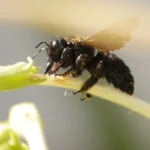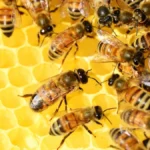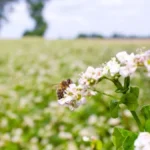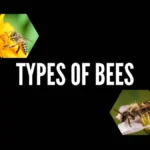Azaleas are a relatively diverse family of flowering plants in the genus Rhododendron. The nectar of these flowers generally contains toxic andromedotoxins! Do azaleas attract bees? Yes, sometimes they do! Read on to find out why, in general, keeping bees in areas where there are large numbers of Azaleas may not be a good idea!
What Are Azaleas?
Azaleas are a group of flowering plants in the Rhododendron genus. These are one of the more popular plant species in many parts of the world, and much like roses, occupy a special place in many cultures. Unlike roses, Azaleas are very very toxic plants!!
The main toxins in Azaleas are andromedotoxins. This is a diterpene poison that appears to cause problems with the sodium channels in nerves. This can, in some cases cause hallucinations, in larger doses, it will kill you, or paralyze and then kill you.
In ancient times, the honey of some of these flowers were used to create honey for use as a weapon. It would be left in houses so that invaders would find it, eat it, and fall asleep/die/be paralyzed and easy to kill.
Do Azaleas Attract Bees?
I have grown azaleas in the past and have hardly ever seen a bee on them. I have seen carpenter bees on them in the southern hemisphere, and bumble bees on them in the northern hemisphere. However, a brief search of the internet, including relatively respectable sites such as this, suggests that bees can be induced to collect toxic honey from these plants.
It would therefore appear that it is possible for bees to visit these flowers under certain conditions and produce honey! Again, I cannot vouch for this personally, as I have never seen it, but, if it is in Pubmed, it is peer reviewed and true. So do azaleas attract bees? Yes. It is confirmed in peer-reviewed publications.
Do Bees like Azaleas?
The chemical structure of the toxin in azaleas suggests that it would be toxic to bees too. However, if they are able to produce honey from this, it appears that maybe it is not toxic to bees. As I have said, I have grown certain ornamental azaleas in my life and I have never seen a single honeybee on their flowers – this despite the fact that any place I have ever stayed in has had a minimum of five hives in the garden – often closer to 30 hives.
It may be that certain varieties of azalea are more attractive to bees than others. I do not know. The shape of the flower suggests that it would be quite difficult for bees to get to the nectar. Again, with nature, these rules are not hard and fast. Some years, the nectaries in plants can overproduce nectar and fill a flower, resulting in bees being able to reach nectar that would be hard to reach in other years.
I have also seen cases where the work of bigger bees such as bumble bees and carpenter bees opens a flower up so that smaller bees such as honeybees can get to the nectar. Bumble bees and carpenter bees are however bees!
As a general rule, I would say that in answer to the question “Do azaleas attract bees?” the general answer would be “no” with a small sub-statement that under certain conditions bees may learn to work these flowers and produce honey, that is toxic if there are enough flowers. However, the question “do azaleas attract bees?” is a trick question, and the flowers are in fact very attractive to some bees – specifically bumble and carpenter bees!
Read more about Do Bees Sense Fear?

Azalea Honey
In the event that bees do collect azalea honey, it is called “mad honey” due to the presence of the neurotoxic andromedotoxins. Depending on soil moisture levels, it appears that some reports suggest that the honey gathered from bees forced, through lack of other flowers, to forage on azaleas can be toxic to humans, but not the bees – whereas under other soil moisture conditions the nectar is toxic to the bees. Hence there is a fine balance between collecting a crop of poisonous honey and losing your hive due to the bees being poisoned.
Bumble Bee-friendly Plants
Azaleas are an example of a bumble bee-friendly plant. The bumble bees appear to not be affected by the toxins in the nectar of azaleas and are also able to easily work these flowers in most cases.
Generally, legumes, such as peas, beans, and fava beans are excellent bumble bee-friendly plants that will help maintain a healthy population of bumble bees in your garden. Sometimes, and sadly this company seems to not be producing currently, you can buy seed packs for bumblebees such as this pack.
If you are adventurous, you can sprinkle a bit of clover seed on your lawn, and these will produce clumps of clover flowers that nourish bumble bees.
Plants that Repel Bees
I have never seen such a plant! There are certain plants that bees do not bother to visit, but I have never actually seen a plant that will chase bees away. A cursory scan of the internet suggests all sorts of plants, many of which I have seen bees actively forage on, will repel bees. This is clearly a case of some sort of miscommunication.
In certain cases, there are flowers that are just not attractive to bees – this can be due to the shape of the flower not allowing a bee to be able to access nectar, or the plant not producing nectar of a high enough sugar content for the bees to find it interesting. These flowers do not repel bees per see – they just do not attract the bees.
So Should You Plant Azaleas Near Beehives?
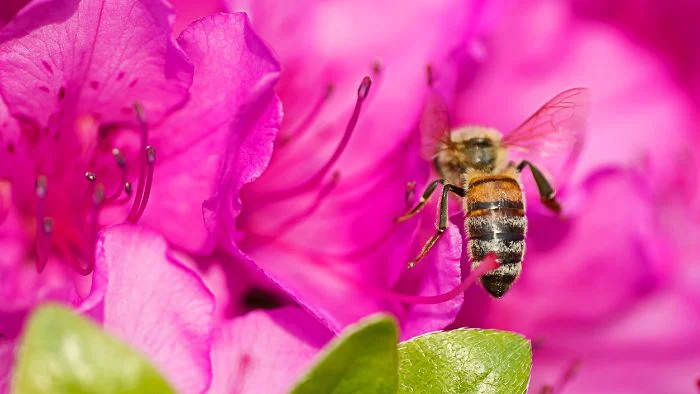
In conclusion to the question “do azaleas attract bees?” I personally have never seen this happen in the sense of attracting honeybees, but in the broader sense of attracting bumble bees and carpenter bees – yes they do attract bees. In terms of honeybees, if they do attract honeybees, the honey produced can be toxic to humans and bees depending on the type of azalea and the conditions under which it is growing.
Planting Azaleas near Beehives FAQs
1. Do azaleas attract bees?
Yes, azaleas can attract certain types of bees, especially bumble bees and carpenter bees. While honeybees generally avoid azaleas due to their toxic nectar, under certain conditions, they may still visit the flowers.
2. Is azalea nectar poisonous to bees?
Azalea nectar contains andromedotoxins, which are generally harmful to bees. However, bumble bees and carpenter bees seem less affected. In some cases, honeybees may forage on azaleas, but this can result in toxic honey production.
3. What is mad honey, and how is it related to azaleas?
Mad honey is honey produced by bees that have foraged on plants like azaleas, which contain neurotoxic andromedotoxins. This honey can cause hallucinations, nausea, and in severe cases, paralysis or death when consumed by humans.
4. Can azalea honey harm humans?
Yes, honey made from azalea nectar can be harmful due to the andromedotoxins present in the nectar. Symptoms of poisoning include dizziness, nausea, vomiting, and even death in extreme cases.
5. Do honeybees avoid azaleas?
In general, honeybees tend to avoid azaleas due to the shape of the flower and the toxic nature of the nectar. However, in regions with limited forage options, they may resort to visiting azaleas.
6. What types of bees are most attracted to azaleas?
Bumble bees and carpenter bees are the most common visitors to azalea flowers. Their larger size allows them to access the nectar more easily, and they seem less affected by the toxins in the nectar.
7. Why are some azaleas more toxic than others?
The toxicity of azaleas can vary depending on factors such as the species, soil conditions, and environmental factors. In some cases, the nectar may be toxic to bees and humans, while in others, the impact may be less severe.
8. Are there other plants that produce toxic honey like azaleas?
Yes, other plants, such as rhododendrons and certain species of laurels, also produce nectar that can lead to toxic honey when foraged by bees. These plants contain similar toxins like andromedotoxins.
9. How can beekeepers protect their bees from azaleas?
Beekeepers can minimize the risk by ensuring that there are plenty of non-toxic forage options available for their bees. Additionally, they should avoid placing hives near large azalea plantings.
10. Can azalea honey be sold commercially?
No, honey containing andromedotoxins (from azaleas) is generally not suitable for commercial sale due to its toxic nature. Consuming this honey can lead to serious health issues.

Dr. Garth A. Cambray is a Canadian/South African entrepreneur and beekeeper with 28 years of experience in apiculture and specializes in adding value to honey. His Ph.D. research developed a new advanced continuous fermentation method for making mead that has resulted in a number of companies globally being able to access markets for mead. His company, Makana Meadery, exports honey mead to the USA where it is available to discerning connoisseurs. He has also developed technologies to commercially manufacture organic honey vinegar in Zambia for export globally. He holds a few patents globally in the ethanol industry and believes in technology and knowledge transfer for human development and environmental sustainability. One of his proudest achievements is the fact that the wind farm he started at one of his old apiary sites has essentially made his hometown carbon neutral.

